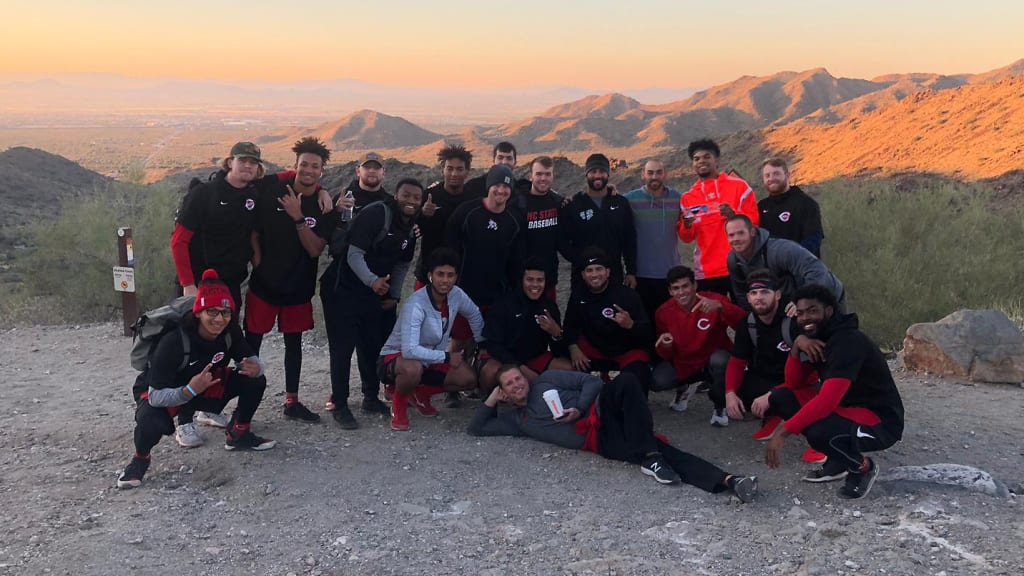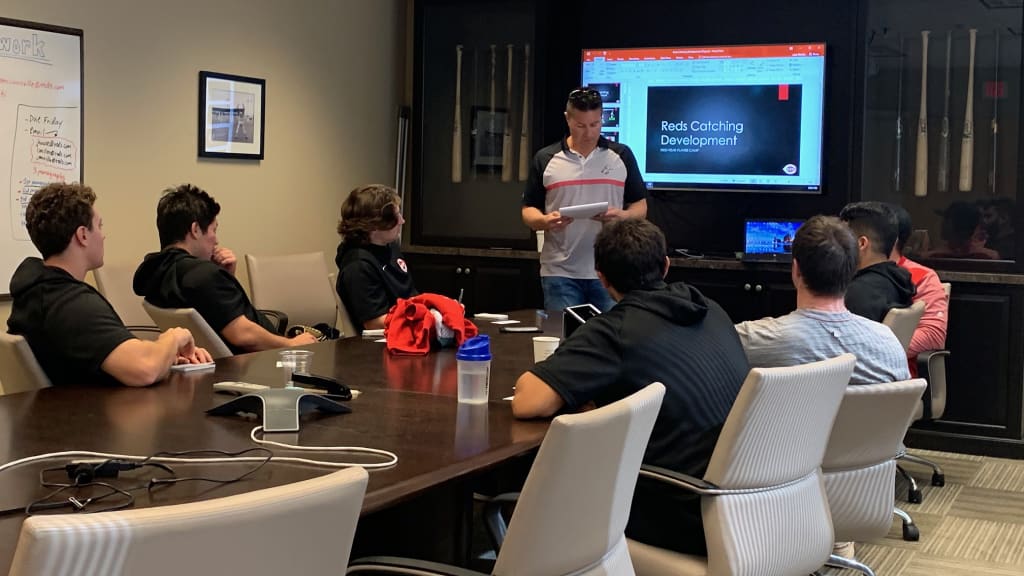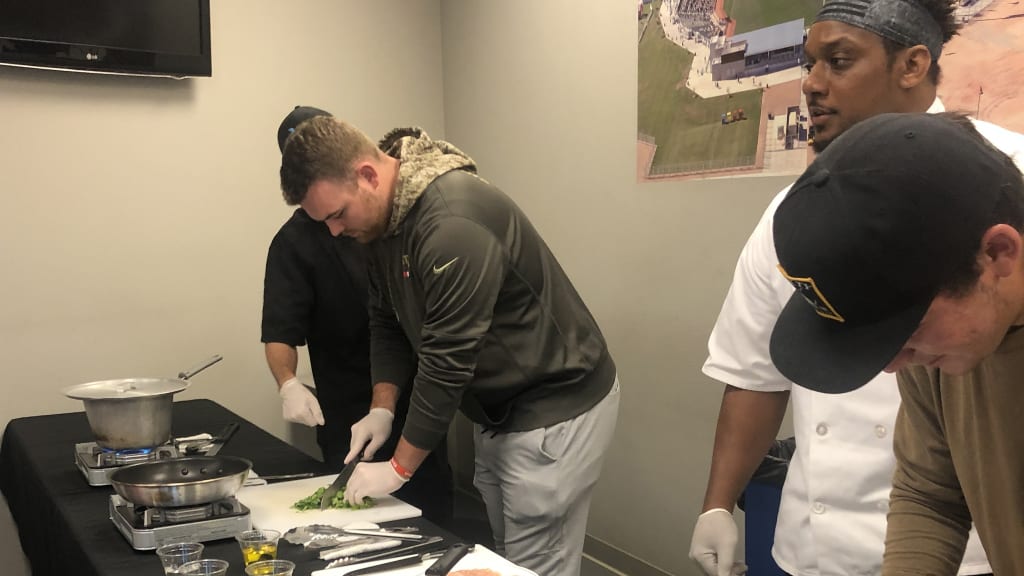
CINCINNATI -- Usually at the Reds' player development complex in Goodyear, Ariz., playing baseball is the first and last order of business each day.
Major Leaguers and Minor Leaguers arrive around sunrise with the purpose of getting on the field or into the batting cages and bullpens to improve their skills. But over the past month, the Reds tried something different with their first-year Minor League players and held an orientation camp. It was the rare time that preparing and playing baseball was not at the top of the to-do list.
“They didn’t have to worry about anyone evaluating them, baseball-wise,” Reds vice president of player development Shawn Pender said. “All they had to worry about was being first-year players. It’s kind of like when you’re leaving home for the first time and going to college orientation.”
Pender credited Mark Heil, the player development coordinator for the club, and others, including senior director of player development Eric Lee, for formulating and developing a program that gave the players -- some whom are still teenagers -- with health and wellness tools that can serve their best interests both at and away from the ballpark. Among the participants were high picks from the 2019 Draft, like first-rounder and lefty pitcher Nick Lodolo (Reds' No. 2 prospect and No. 56 in MLB), second-rounder and shortstop Rece Hinds (Reds' No. 6 prospect) and third-rounder and second baseman Tyler Callihan (Reds' No. 5 prospect).
“We really wanted to help the kids experience things they wouldn’t have normally in Spring Training,” Pender said. “With Spring Training so busy, it’s impossible to get everything accomplished.”
Even with baseball temporarily on the backburner, players stayed busy. There were two 12-day orientation camps held with the full group overlapping over a four-day period. Following morning lifting and conditioning, there were language and culture classes and sessions that introduced analytics and biomechanics. There were cooking classes, lessons on proper hydration along with various competitions and team-building exercises.

“The kids we got in the Draft, they played their high school or college seasons and then they played all summer and then finishing up with the instructional league,” Reds president of baseball operations Dick Williams said. “It was just a lot at the end of the season to ask people to do. So, we thought we’d have an orientation for mostly first-year players to come out, meet the staffs -- in training, strength and conditioning, player development, a lot of the coaches -- and do more off the field.
“They also had a chance to bond with each other. Now they already can have that knowledge base for when they arrive at Spring Training and can hit the ground running, focused on getting on the field and playing every day. We won’t be spending a lot of time getting them up to speed.”
There were field trips to the grocery store with the team nutritionist or to the outdoors for hikes. All activities stressed how the organizations wants their players to work, how to eat properly and care for their bodies.
Since many of the players are living away from home for the first time, they were given tips on meal preparation, what foods to seek when eating out and when to eat certain food types and how to stretch their budgets.
“They know when to put carbs in your body, when to put fat in your body, when to stay away from that -- the right ratio,” Williams said. “What makes you feel full, what gives you energy or slows you down.”

In language and culture classes, English- and Spanish-speaking players were not split up. Each session had a roughly 50-50 mix, and the players helped teach each other.
“They were not afraid to make mistakes in front of each other,” Williams said. “It’s a cool learning experience. Our English-speaking players got to learn the challenges our Latin players coming over have with the language barrier.”
Some of the Major League coaching staff was also on hand to work with players. On the analytical side, they were shown how to track and recognize pitches via virtual-reality simulations and shown technology that monitors swings for hitters and spin rates and other telemetry for pitchers.
Players received group and individual attention with the coaches and staff and familiarized themselves with the people and equipment that exists to help them become better players and people, with the ultimate goal of making the team better.
“It was a comprehensive opportunity to get with these guys in a non-traditional baseball environment,” Pender said. “I was really happy with it because it was a chance for a bunch of people to take responsibility in areas of player development that they hadn’t had an opportunity to until that point. The kids really took ownership of it as well. We got a lot of positive feedback.”
“The biggest thing you don’t realize is these kids don’t always get a chance to express what they want. That was one thing we found out through this. They had a chance to talk to each other and staff, and I think it will help with the ownership of their own careers.”


